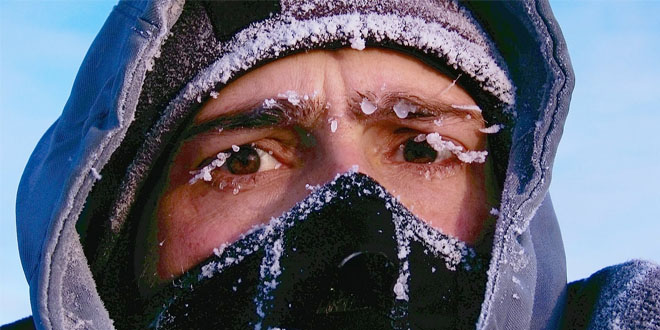
Causes and prevention of hypothermia
One of the vital functions in mammals is homeostasis. The maintenance of normal body temperature by humans is a physiologic action that helps us stay alive in cold temperature. However, sometimes the body is not able to produce as much heat as is being lost to the environment. In that case the body goes in a state of hypothermia.
Hypo means lesser or low and thermia is related to temperature. This temperature is recorded as lesser than 35 C. When the body temperature drops, organs are unable to function properly. If it is not treated immediately, it can lead to absolute failure of heart and lungs and can lead to death. Hypothermia usually occurs in cold temperature or swimming in very cold water.
SYMPTOMS
When the body temperature first starts to fall, it tries to bring it to normal by homeostasis. First there is shivering. In mild hypothermia, there is dizziness, slight confusion and trouble speaking. Gradually the skeletal muscles also get slower and there’s lack of coordination. Breathing gets faster along with an increase in heart rate.
If hypothermia gets severe, shivering stops and clumsiness and lack of coordination increases. The patient gets confused and decision-making skills diminish. There is lack of energy as most of the energy is being used by the heart and lungs. The person shows lack of concern and may start removing warm clothes in confusion. Gradually, the person loses consciousness, the pulse gets weak and breathing gets shallower.
CAUSES
Prolonged and unprotected exposure to cold weather, cold water and wet clothes leads to hypothermia. Inadequate indoor heating or strong air conditioning can cause hypothermia is infants and geriatrics. Alcoholics and people on certain medication are more likely to develop hypothermia.
Antidepressants, antipsychotics, narcotic pain medication and sedatives alter the body’s ability to regulate temperature. People suffering from hypothyroidism, anorexia nervosa, strokes and any disease that restricts blood flow are at higher risk of developing hypothermia even if they stay indoors.
DIAGNOSIS
Diagnosis of hypothermia is done through apparent signs and symptoms. However, mild hypothermia may not be detected at home. Taking rectal temperature is very useful in this situation. Blood test can also be done to confirm the diagnosis. Hypothermia can lead to freezing of body tissues also known as frost bite. Necrosis of tissue also occurs due to lack of blood flow and can become gangrenous.
TREATMENT
Immediate medical attention should be given to a person suffering from hypothermia. First aid care should be given at home until help arrives. Be gentle with the patient. Do try to massage or rub them. Gently move them to warm, dry place and limit movement as much as possible. If the person is wearing wet clothes, remove them immediately. Cut off the clothing if necessary in order to reduce limb movement. Insulating the person is important, cover up the body with blankets leaving the face. If the person is alert and aware, give them warm beverage make sure it’s not alcoholic or caffeinated. Keep a check on pulse and heart rate. If it seems too low or shallow perform CPR if you are trained.
Do not apply a warm compress directly to the limbs as this can be fatal for the person. Do not use hot water, heating lamp or any method of direct heating. It can damage the skin, cause irregular heart beat or cause the heart to stop beating.
Medical treatment is provided by professionals depending upon the severity of hypothermia. Blood rewarming is carried out by drawing blood out through hemodialysis machine. Intravenous solution of warm salt water maybe injected to warm the blood. Airway warming is also carried out by providing humidified oxygen with a mask or nasal tube. Warm salt water solution is also used around the abdomen and lungs area.
PRECAUTIONS
Hypothermia can be easily prevented by a few precautions. Cover up yourself and children properly before you leave for work and school. Mitten, hats and mufflers prevent heat loss from face, neck and hands. Avoid playful or over-exertive exercises that can cause you to sweat as sweating is a cooling phenomenon.
Wear double or triple layers depending upon the temperature outdoors. Inner layers can be made of wool, silk or polypropylene. Outer layers should be water repellant and tightly woven to keep away water and air. Stay as dry as possible.

